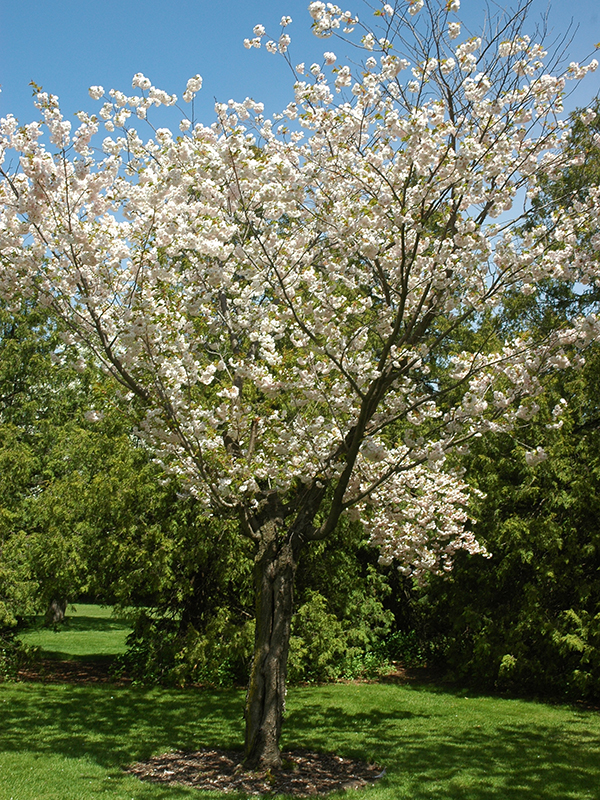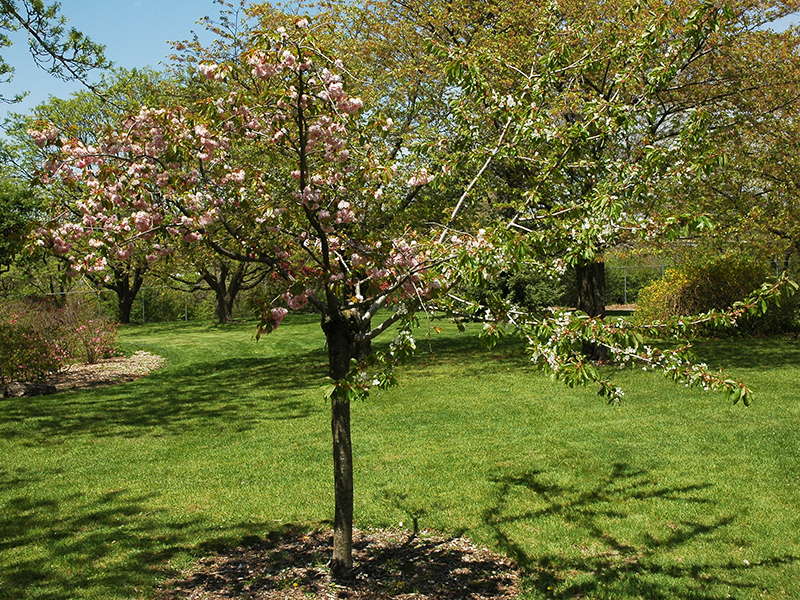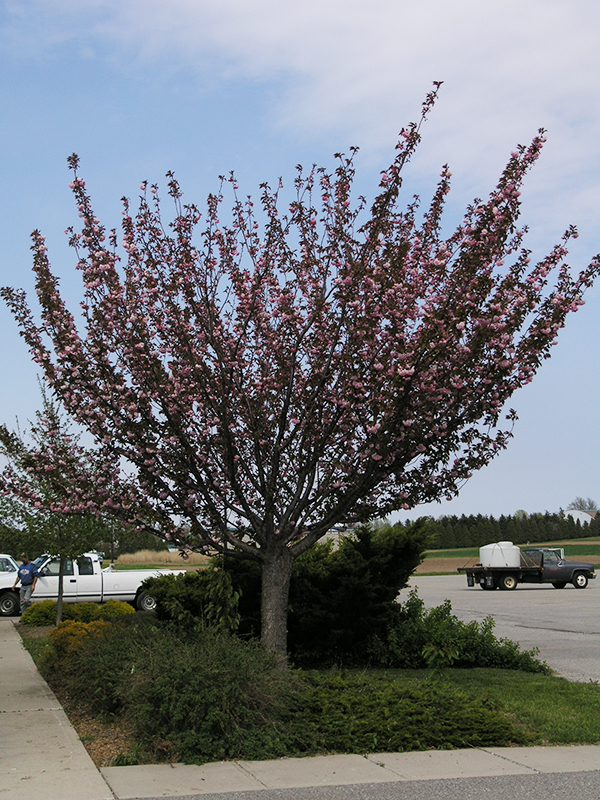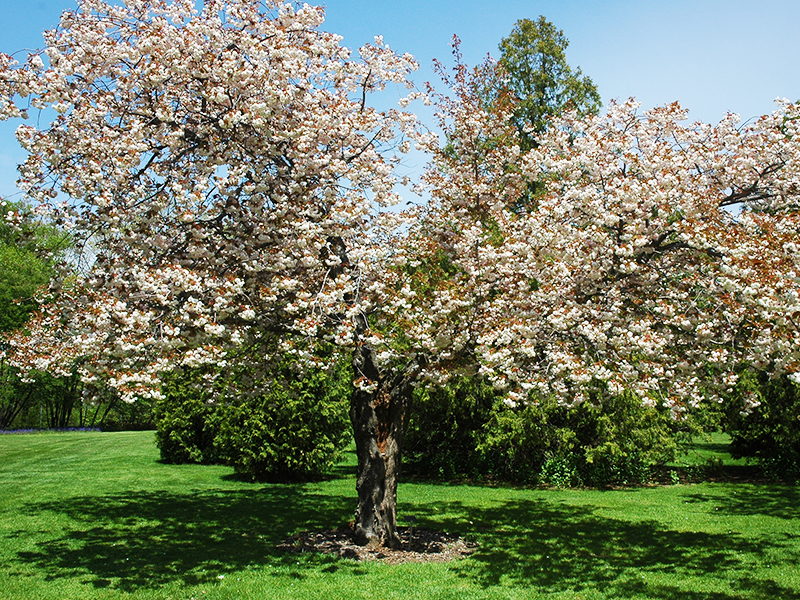| General Description | Round-headed small deciduous tree. |
| ID Characteristic | Copper-brown bark with small clusters of white flowers. |
| Landscape | Low maintenance. |
| Propagation | Grafting or softwood cuttings in the summer. |
| Cultivation | Grows best in fertile, well-drained loams, full sun to part shade but flowers best in full sun. |
| Pests | Pests include aphids, borers, leafhoppers, caterpillars and Japanese beetles. Diseases include leaf spot, root rot, fireblight, leaf curl and powdery mildew.
Plum Pox:
Symptoms may be confused with other diseases/disorders such as nutrient deficiencies or pesticide injuries. PPV symptoms can occur on leaves, flowers and/or fruit. Faint yellow rings or lines may be found on the leaves. PPV generally does not cause plant mortality however, can reduce the plant productivity and longevity.
How to Reduce the Spread and Impact of PPV:
1. Propagate vulnerable Prunus trees and shrubs outside of the affected area
a. Isolation is important to protect clean plants from future spread of the disease.
b. Propagating and growing vulnerable plants away from the virus-infected area reduce the likelihood of the disease spreading any further. This should be as far away from the quarantined area and any potential sources of the virus.
2. Propagate Prunus plants with virus-free Budwood and Rootstock from virus tested mother trees
a. This eliminates the propagation link for viral diseases.
3. Inspect vulnerable Prunus for symptoms
a. All Prunus shrubs and trees should be visually inspected for symptoms at lease twice per year and conducted by trained personnel familiar with the virus.
b. Any plants found to be infected should not be moved or sold and must be reported to the Canadian Food Inspection Agency immediately.
c. Inspections should not be conducted in periods of hot weather (temperatures over 30˚C).
4. Manage aphid vectors
a. Aphids are extremely attracted to suckers (vegetative shoots at the base of the tree), these should be removed to avoid aphid colonization, feeding or migration.
5. Plant tolerant and resistant varieties
a. When available, grow plum pox tolerant or resistant Prunus varieties.
|
| Notable Specimens | Pinetum Park and Pine Lodge Gardens, Cornwall, England. |
| Bark/Stem Description | The smooth bark is chestnut-brown with prominent horizontal lenticels (raised pores). |
| Leaf Description | Arranged alternately, simple, ovate-lanceolate, 5-13 cm long and 2.5-6.5 cm wide, smooth and shiny with a short petiole and a serrate or doubly serrate margin. At the end of autumn green leaves turn yellow, red or crimson. |
| Flower Description | Showy white blooms are produced in racemose clusters of 3-5 at nodes on short spurs, 3.5 cm in diameter, double petal arrangement. |
| Fruit Description | Spherical black drupe (fleshy fruit with thin skin and a central stone containing the seed) 8-10 mm in diameter. |



